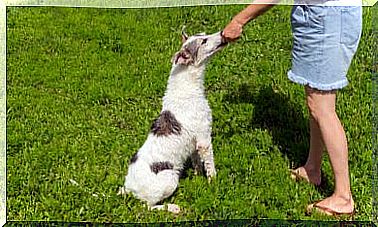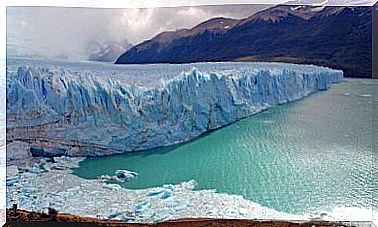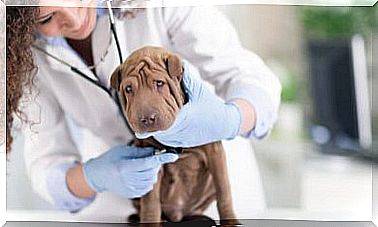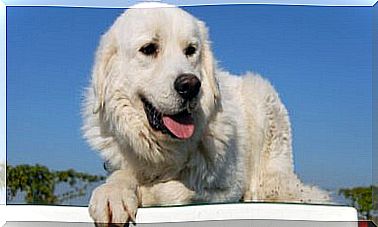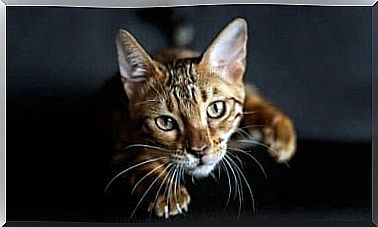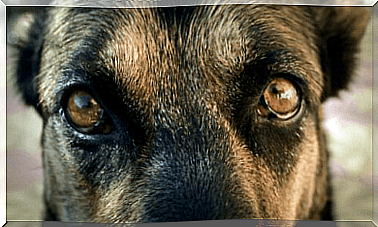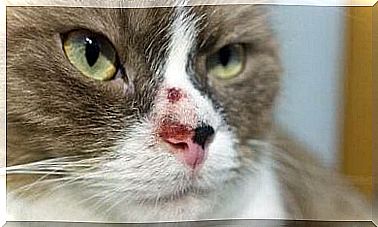Intestinal Obstruction In Reptiles: Symptoms And Treatments
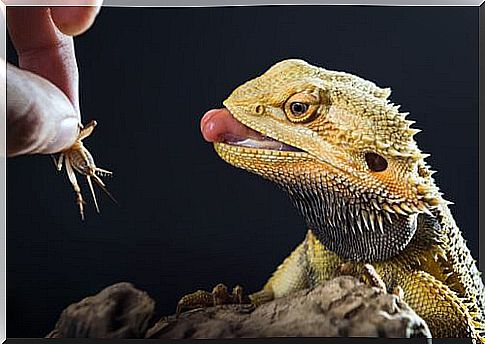
Intestinal obstruction in reptiles is a disorder that consists of an obstruction caused by various factors. For example, because the animal has ingested terrarium substrate, excess food or any other solid material that prevents normal defecation.
In lizards and amphibians, it is most commonly caused by the accidental ingestion of sand or soil from the terrarium.
Most reptiles, frogs and toads feed by swooping down on their prey. It is therefore not strange that they end up ingesting even elements that are impossible to digest. If you want to know how to avoid intestinal obstruction in these exotic animals, read on.
Causes of intestinal obstruction in reptiles
As we have already mentioned, intestinal obstruction is an accumulation of waste substances in the stomach and / or intestines of the animal. According to this definition, virtually anything solid or semi-solid can cause intestinal obstruction in an exotic animal.
Among the most common causes of intestinal obstruction are the following. Don’t miss them, as many inexperienced tutors tend to overlook some of these mistakes:
- Crushed substrates. Uncompacted soil, fine sand, small stones and other loose elements in the terrarium are easily ingested by mistake while the animal is feeding.
- Too big a prey. Metabolizing huge prey from a medium sized lizard can be a real challenge. A reptile should never be given an invertebrate or vertebrate larger than its head size, except for boas and other snakes.
- Prey with too hard exoskeletons. Live beetles are not recommended for precisely this reason. Decomposition of exoskeletons can be a daunting task for a reptile’s digestive system. This can lead to intestinal blockage in the long run.
- Too low temperatures. Reptiles are ectotherms, so their metabolism is completely dependent on the outside temperature. If the temperature is too cold, digestion becomes difficult. This favors the appearance of intestinal obstructions.
- Dehydration. Lack of water in the reptile’s body can make the stool too hard. In these cases, defecation may be impossible for the animal.
The first and second mistakes are extremely common. How many times have you seen a gecko in a terrarium with a sand substrate? If you have a bearded dragon or leopard gecko with stones or sand as a base for your terrarium, it’s only a matter of time before a bowel obstruction occurs.
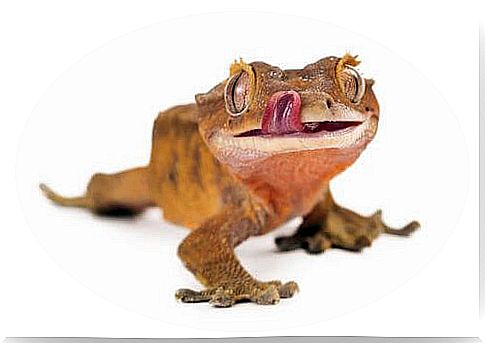
Symptoms
The first clinical signs of this condition include a lack of appetite on the part of the reptile. Also, before the occlusion his stools are too hard or contain pieces of substrate. If you don’t act quickly, the following moderate to severe symptoms may appear:
- Tremor in the paws.
- Regurgitation. In the case of many amphibians this is very evident, as they may even throw up their stomach before swallowing it again.
- Paralysis, lethargy and chronic loss of appetite.
- Appearance of a bluish area on the abdomen. This corresponds to the blocked substrate in the intestine, which can be seen from the abdominal epidermal transparencies of many reptiles.
In the early stages, the clinical signs do not go beyond a natural constipation picture. Unfortunately, if the disease becomes complicated or if a solution is not found, the animal can die. Many owners lose their exotic pets for this reason and never find the underlying reason.
Treatment of intestinal obstruction in reptiles
The best treatment is prevention. For this, it is essential to always use an organic substrate for the terrarium of any exotic reptile, without exception. There are “sands” of vegetable origin, composed of cellulose residues and other materials which, at least, can be decomposed by the digestive tract of the animal.
It has been found, as indicated by veterinary records, that sand is one of the worst possible substrates for reptiles. Gradually, the animal will swallow the grains of this inorganic material. Unfortunately, until a nearly impossible-to-remove plug forms, unless veterinary surgery is performed.
In case of mild intestinal obstruction, the animal can be bathed in lukewarm water every day. This usually activates the motility of the reptile’s digestive system, so that the feces are released during the bath. Another good option is to remove all solid food from its diet until it gradually breaks free.
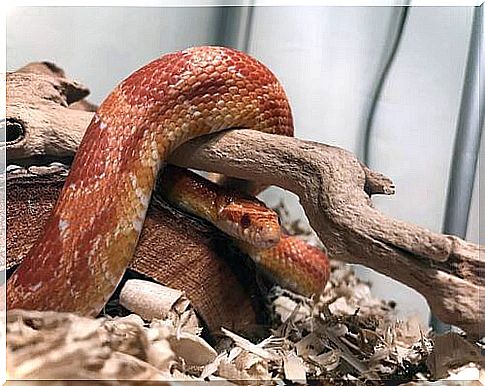
A very common mistake
As we have already mentioned in the previous lines, not choosing the right substrate for the pet is a very common mistake in novice tutors. Find out before buying any exotic reptile, because if you improvise you can make mistakes. The health of a living being is at stake.
Mild cases of intestinal obstruction in reptiles can be resolved by changing environmental parameters, diet and bathing the animal. Unfortunately, if the clinical picture worsens, the only thing left to do is go to the vet for reptile surgery.
